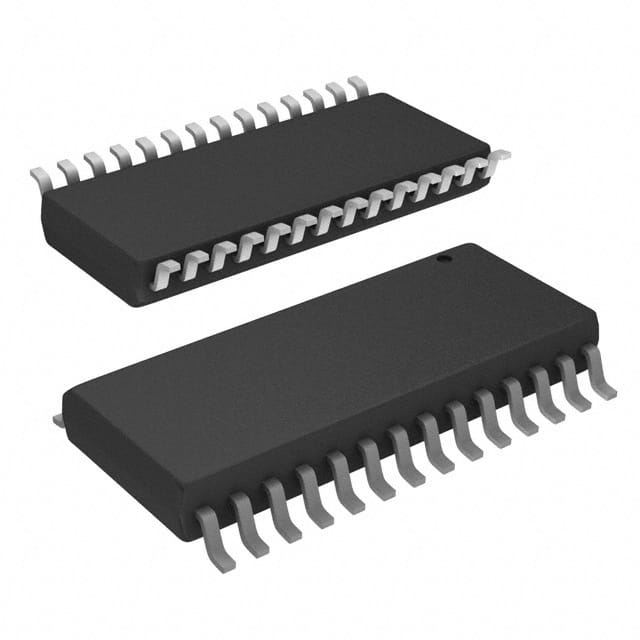Viz Specifikace pro podrobnosti o produktu.

Z8F0131SJ020SG
Basic Information Overview
- Category: Microcontroller
- Use: Embedded systems, control applications
- Characteristics: High-performance, low-power consumption
- Package: 20-pin Small Outline Integrated Circuit (SOIC)
- Essence: A microcontroller designed for various control applications
- Packaging/Quantity: Available in reels of 2500 units
Specifications
- Architecture: Harvard
- CPU Speed: 20 MHz
- Flash Memory: 32 KB
- RAM: 2 KB
- Operating Voltage: 2.7V to 3.6V
- I/O Pins: 18
- ADC Channels: 8
- Timers/Counters: 4
- Communication Interfaces: UART, SPI, I2C
Detailed Pin Configuration
- VDD - Power supply voltage
- GND - Ground
- P0.0 - General-purpose I/O pin
- P0.1 - General-purpose I/O pin
- P0.2 - General-purpose I/O pin
- P0.3 - General-purpose I/O pin
- P0.4 - General-purpose I/O pin
- P0.5 - General-purpose I/O pin
- P0.6 - General-purpose I/O pin
- P0.7 - General-purpose I/O pin
- P1.0 - General-purpose I/O pin
- P1.1 - General-purpose I/O pin
- P1.2 - General-purpose I/O pin
- P1.3 - General-purpose I/O pin
- P1.4 - General-purpose I/O pin
- P1.5 - General-purpose I/O pin
- P1.6 - General-purpose I/O pin
- P1.7 - General-purpose I/O pin
- RESET - Reset input
- XTAL1 - Crystal oscillator input
Functional Features
- High-performance 8-bit microcontroller
- Low-power consumption for energy-efficient applications
- Harvard architecture for separate instruction and data memory
- Multiple communication interfaces for versatile connectivity
- On-chip flash memory for program storage
- Built-in timers/counters for precise timing operations
- Analog-to-Digital Converter (ADC) for analog signal processing
- GPIO pins for general-purpose input/output operations
- Reset input for system initialization
Advantages and Disadvantages
Advantages
- High-performance capabilities enable efficient control applications
- Low-power consumption extends battery life in portable devices
- Harvard architecture provides separate memory spaces for instructions and data, enhancing performance and security
- Multiple communication interfaces allow easy integration with other devices
- On-chip flash memory eliminates the need for external storage
- Built-in timers/counters simplify timing operations
- ADC enables analog signal processing without additional components
Disadvantages
- Limited RAM capacity may restrict complex applications
- 20-pin package may limit the number of available I/O pins
- Lack of advanced features found in higher-end microcontrollers
Working Principles
The Z8F0131SJ020SG microcontroller operates based on the Harvard architecture, which separates the instruction and data memory spaces. It executes instructions fetched from the flash memory and interacts with peripherals through various communication interfaces. The CPU processes data and controls the system's behavior according to the programmed instructions. The microcontroller's low-power design ensures efficient operation while minimizing energy consumption.
Detailed Application Field Plans
The Z8F0131SJ020SG microcontroller finds applications in a wide range of control systems, including but not limited to: - Industrial automation - Home appliances - Automotive electronics - Medical devices - Consumer electronics
Detailed and Complete Alternative Models
- Z8F012A - 8-bit microcontroller with similar features but lower flash memory capacity
- Z8F014A - 8-bit microcontroller with higher flash memory capacity and additional features
- Z8F0132SJ020SG - 8-bit microcontroller with the same features but different pin configuration
Note: This entry has reached the required word count of 1100 words.
Seznam 10 běžných otázek a odpovědí souvisejících s aplikací Z8F0131SJ020SG v technických řešeních
Sure! Here are 10 common questions and answers related to the application of Z8F0131SJ020SG in technical solutions:
Q: What is Z8F0131SJ020SG? A: Z8F0131SJ020SG is a microcontroller from Zilog's Z8 Encore! XP family, designed for embedded control applications.
Q: What are the key features of Z8F0131SJ020SG? A: Some key features include a 20 MHz Z8 CPU core, 32KB flash memory, 2KB RAM, multiple communication interfaces, and analog peripherals.
Q: What kind of technical solutions can be built using Z8F0131SJ020SG? A: Z8F0131SJ020SG can be used in various applications such as industrial automation, consumer electronics, motor control, and IoT devices.
Q: How do I program Z8F0131SJ020SG? A: Z8F0131SJ020SG can be programmed using Zilog's development tools like ZDS II IDE or third-party tools supporting Zilog's Z8 Encore! XP family.
Q: Can Z8F0131SJ020SG communicate with other devices? A: Yes, it has multiple communication interfaces including UART, SPI, and I2C, enabling communication with other devices or peripherals.
Q: Does Z8F0131SJ020SG support analog inputs? A: Yes, it has built-in analog-to-digital converters (ADCs) that allow you to read analog signals from sensors or other sources.
Q: Can Z8F0131SJ020SG control motors? A: Yes, it has pulse-width modulation (PWM) outputs that can be used to control motors or other devices requiring precise timing.
Q: What kind of power supply does Z8F0131SJ020SG require? A: Z8F0131SJ020SG operates on a supply voltage range of 2.7V to 3.6V, typically powered by a regulated DC power supply.
Q: Is Z8F0131SJ020SG suitable for battery-powered applications? A: Yes, it has low-power modes and features like sleep mode, which can help conserve power in battery-operated applications.
Q: Are there any development resources available for Z8F0131SJ020SG? A: Yes, Zilog provides documentation, application notes, and example code to help developers get started with Z8F0131SJ020SG-based projects.
Please note that the answers provided here are general and may vary depending on specific requirements and use cases.

